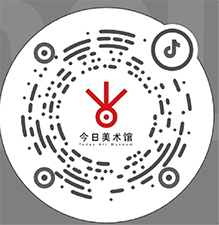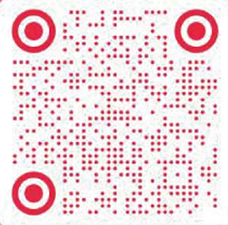Duration: 2012.06.03 -- 2012.06.10
Location: 3rd floor of Building NO.1, Today Art Museum
"The Moving Prints" as Abstract Experimentation:
Li Gang's Methods of Ink Painting
By Pi Li
There are two reasons why we named Li Gang's exhibition "The Moving Prints". The first is Li's use of "prints" as the main structure of his works: the paintings are created with the prints of actual objects, or the folding of xuan papers to form rhythmic patterns. Such methods are manifestations of the meaning of “the moving prints". The second takes the "Six Principles of Chinese Painting" by Xie He as its basis. An art historian and critic from the 5th century, Xie He proposed the "Six Principles of Chinese Painting" of which "the moving prints" is one principle, meaning how to turn revised drafts into finished paintings. In ancient Chinese painting, the moving prints was a concept that underwent constant redefinition, and it may be understood as a form of copying. With the birth of freehand painting, such copying was transformed from "actual copying" to "freehand copying" in a conceptual reversal. For their use of "prints" as the main method, Li's latest paintings utilise actual objects as the tools to "reverse" textural interpretations of our world, in order to create new, "mental" graphics. In this context, I feel that Li's series can be called "experimental" works, while they are also an extension of the poetics of Chinese ink. The extension of such poetics is not simply manifested in water and ink, but also in the reversal of materials, texture, graphics and paintings and the intellectual realm. This reversal is a theory as well as a concept. In Li's works, "the moving prints" does not only reveal the exchanges of consciousness and graphics in his inner world, but also the interaction between the outside world (existing objects), the consciousness of the inner world (concepts) and graphics (abstract language). They are the "prints of the heart" during an industrial era, and they embody a contemporary dimension.
Li’s methods of folding, rubbing and printing instill a glacial facet and a unique consciousness into his paintings. Viewed against the context of contemporary ink, Li's style leans toward "hard-edge abstraction" and it stands out as a distinctive choice. Abstraction in contemporary Chinese ink has its roots in the use of ink in the Southern School from the Ming and Ching Dynasties, especially the freehand literati paintings that are an amplification of visual experience. Despite their abstract guise, they have limited relation to abstraction in contemporary art. The truth is that contemporary ink is an excellent form of lyrical expression in a similar vein to the Southern School. For the absence of realist methods, these works lack an objective reflection on the reality of industrial age. Based on these conceptual relations, Li’s exploration has its intrinsic meanings. These meanings are proof to his art being an experimentation of structural languages. Folding, rubbing and printing are turned into concrete techniques of distilling and preserving messages from the external world, which are purified through repetition to cultivate a distant and rational visual perception. This "abstract experimentation" takes us back to the essence of ink, and it points to a blank in experimental ink in its present state. Beyond "abstract experimentation," the question is not whether there remain any identifiable icons in the finished paintings, but the development of surface and medium in the artworks.
In ink paintings, medium refers to ink and texture, and surface means the expression of ink and layering. In this aspect, development comes from "subtraction". This form of subtraction aims to remove messages (icons) from the real world, to manifest the rational value of artistic contemplation. Li uses the method of "printing" to reduce the world into "moving prints", which lowers both the intensity of ink and emotions in the paintings. The differences between traditional ink and experimental ink remain ambivalent in their emotional dimensions, as both present the illusions of emotions from a pre-industrial era. Li's works are stripped of such illusions. If we view his works from the perspective of iconology, his use of the "printing" method is to deconstruct the figure-ground relation.
The Figure-Ground Relation is an area of visual perception, which was first proposed by Danish Gestalt psychologist Edgar Rubin (1886-1951). The Gestalt psychologists believed that a ground can only be differentiated when it contains two or more figures. Figure and ground, or the figure-ground relation is the most basic means to identify the two-dimensional nature of a surface. The studies of figure-ground relation is to examine the factors for perceiving certain figures as the foreground or background. According to Gestalt psychology, there are four factors in perceiving a surface as the foreground: it is smaller in size; it is comparatively closed or regular; it is more meaningful on a visual level; it is more visually appealing. The Figure-Ground Relation is an important principle in the studies of iconology, and it is often extended and applied to the analysis of modernist art, especially abstract art and structural art. As a method of art analysis, the figure-ground relation reveals the challenge faced by realist visual language: in the context of such analysis, a realist painting on the wall is, in fact, a window. Greenberg once used this concept of "window" to refer to the illusion created by realist art, meaning that a realist painting on the wall is a window to reality. The Abstract Expressionism movement that followed the Realist era sought to deconstruct the constraints of such a "window". However, we must not stop at such conclusions. While an expressionist painting might not show the external world in concrete details as a realist painting does, it underlines the different feelings of the scene. For this reason, Reinhardt said that abstract expressionism is still a window, and it is a different kind of emotional perception. This is also the theoretical basis for Minimalism.
With an understanding of these contexts, we can decipher the unique meanings of Li's creative methods. Li’s use of folding, printing and rubbing purifies colours and pure colours into their essences, and they are no longer "windows to another world". He minimizes the figure-ground relation and the layering in his paintings, giving them a strong sense of surface. On one hand, this sense of surface removes the icons of reality; on the other hand, it endows the medium (ink, paper) and texture with the autonomy of expression. On this level, Li’s works are a confrontation with the tension in contemporary ink. His paintings mark the return to abstract languages, as he seeks to remove the "illusions of emotions" that have long prevailed in contemporary ink. These illusions of emotions are the link between contemporary ink and traditional ink. It may be time to remove this link, since experimental ink has evolved through the last few decades. Regardless of the spirits and comprehension in ink, we can view the last of the Six Principles - "the moving prints" - as the origin of a concept and a method with rich, symbolic meaning.
Today Art Museum, Building 4, Pingod Community, No.32 Baiziwan Road, Chaoyang District,Beijing. Tel: 010-58760600
Opening Hours:10 am - 6 pm: closed every Monday and during Spring Festival(2.13-2.23).
© 2005-2023 Today Art Museum
京ICP备13015009号-1
Tech Support:Today Digital Art Museum











